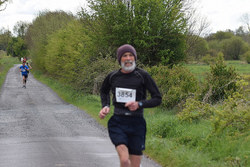 Cardiovascular exercise (CE) trains the heart and lungs, improving oxygen absorption and distribution to the cells of our bodies. Those of you who have taken a course in anatomy and physiology may be familiar with the principal known as Wolff’s Law. More than one hundred years ago, the German Anatomist Julius Wolff, noticed that when animals were sedentary, their bones got weaker and more brittle (what we now call osteopenia and (when severe) osteoporosis). Conversely, he was able to show that animals with osteopenia/osteoporosis could improve and strengthen their bones by becoming more active. By loading weight onto the bones, the body physiologically adapted, meeting the new demand for activity by actually remodeling the bone tissue, making it harder and denser. Wolff’s law, at its essence, can be summed up by the phrase: ‘Use it or lose it.’ And Wolff’s law, it turns out, applies to more than just the bones. Muscle, lung, heart, even brain function improves with use and diminishes with inactivity. Regular CE, when done correctly, improves the function of every body tissue either directly or indirectly. Keep in mind that the changes Wolff observed did not take place overnight. Back to the concept of the Continuum, change (for better or worse) is a gradual process and so is the product not of heroic focused effort, but of our habits of living. The AIL does not involve dieting, it involves a healthy style of eating; it does not involve reaching a certain body weight goal, but rather of getting to and then maintaining healthy body fat levels through good habits. Similarly, CE, with its profound anti-inflammation and pro-circulation effects, is not something to be done until one ‘becomes healthy.’ Failure to exercise the heart and lung regularly will cause you to lose function of these vital organs. Regular CE over long periods of time enables you to gradually improved their function. Making CE a part of your lifestyle enables you to maintain cardiac and pulmonary health for life. What’s more, improving heart and lung function results in improved oxygen absorption and distribution to the cells of our bodies and CE exerts a profound general anti-inflammation effect on the body.
0 Comments
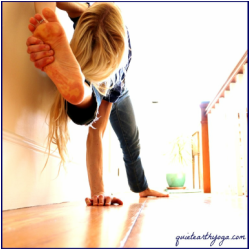 Flexibility training is the second form of exercise. Stretching is the most common form of flexibility training and it is vital for improving and maintaining mobility. Doctors commonly speak of (and routinely measure) something called ‘Range of Motion’ (ROM), which compares the movement of a joint or body area against a set of pre-determined ‘normal’ values. But ROM, measured in degrees of movement, while useful for certain medical purposes, is an artificial construct. ROM measurement has poor inter-examiner reliability (every doctor reads the ROM differently), does not adjust for age, gender, or body type, and captures only a very limited amount of data about mobility. In addition, the stereotyped movements associated with ROM do not reproduce normal, natural body movement and, inversely, the vast majority of normal body movements which involve the complex coordination of many muscles are not part of standard ROM testing. Range of motion is not the same thing as mobility. Our bodies are designed in layers. Around the chest, abdomen, and pelvis are deep, intermediate, and superficial layers of muscle tissue separated from each other by wrappings called fascia. These fascia-wrapped layers are sometimes called ‘fascial planes.’ Optimal function of the musculoskeletal system includes the easy gliding of these fascial planes against each other. Twisting and reaching, bending, pulling, and pushing, all involve the coordinated contraction of many groups of muscles, movers and stabilizers, and depend on the ability of deep, intermediate, and superficial muscles to glide easily against each other. The healthy gliding of fascial planes is maintained by complex movements which are part of our physical nature. The more we move, the more lubricants our joints produce and the more freely our fascial planes glide. But for many of us, the routines of our daily lives take place in very limited ranges of movement. We drive to work, sit at computers, talk on telephones, relax on sofas, eat at tables. How often do we jump as high as we can, run at top speed, or climb a tree? When was the last time you used all of your strength to do anything? If you are like most people, you are not coming anywhere near the limits of what you are physically capable when it comes to either movement or strength/effort. Which is why the occasional moving of furniture, digging out a bush, or participation in a yoga class can leave us sore or worse–injured. Certainly, we derive benefits from our civilized existence, but we also pay a price. Inactivity means loss of strength, reduction in the production of lubricants (which compounds the effect of loss of collagen and other important components of connective-tissues as we age), and the development of fixations and adhesions–the drying out and sticking together of our connective tissues including the fascial planes which are essential for movement and optimal musculoskeletal function. Over the last 5 years, a new form of movement, known as ‘Dynamic Spinal Stretching (DSS)’ or Stick Stretching,‘ first developed by Dr. Arthur Feygenholtz, has been gaining popularity for Diffuse, low-grade cellular inflammation causes our fluids to thicken, and the lubricants we produce to aid in motion to become sticky like glue. Over time, this glue locks connective tissues together. When this happens at a joint, it is referred to as a ‘fixation.’ When it happens between muscles or their fascial coverings, it is called an ‘adhesion.’ As fixations and adhesions develop, complex movements like turning to look behind you when backing out of a parking space become more difficult. We chalk it up to the aging process, but in truth, there is much we can do to prevent and reverse the progressive formation of joint fixations and myofascial adhesions. Stretching, sports such as basketball and volleyball which require us to reach, jump, and twist our bodies, and the practice of yoga with its compound movements and poses are just some of the ways people have found to improve mobility. Ask anyone who plays such a sport or has a regular yoga practice how they feel about it and they will tell you that there is a certain feeling of well-being which comes from these activities which they cannot get any other way. They may not be able to articulate exactly what that feeling is, but there is a sense of bodily freedom which comes from breaking adhesions and fixations which is truly rejuvenating. Breaking adhesions helps to reverse the feeling of stiffness which is one of the primary symptoms of the aging process. its unique ability to break up fixations and adhesions by allowing deep stretching to take place across the broad fascial planes of the body. Dr. Berkoff has used this technique to develop a series of stretches and movements which he has incorporated into his Kore Klass routine which can be done at home. Since lower back pain affects 80% of Americans at some point in their life, and more than 20% of all people over the age of 30 have recurrent or chronic lower back pain and discomfort, Kore Klass was developed as an essential part of health maintenance. Dr. Berkoff tries to interest all of his patients in three things: the Anti-inflammation Lifestyle (AIL), a Core training or back routine, and stick stretching, the Kore Klass. 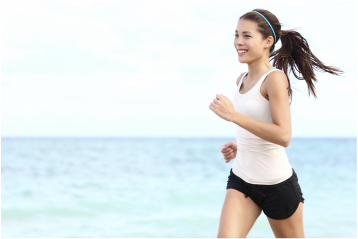 Physical exercise can take three different forms: 1. anaerobic or strength training exercise 2. flexibility training 3. aerobic or cardiovascular exercise Strength training, is important for maintaining overall well-being and for supporting the body’s weight-bearing joints, especially the spine. Weight lifting is the primary example of this form of exercise, but there are other ways to build strength as well. Strength training does not rely primarily upon the ability of the body to utilize oxygen and hence is sometimes referred to as anaerobic exercise. It involves an increase in heart rate for short intervals as a person performs each set of an exercise. The heart rate gradually comes down during the rest period between each set, then elevates again during performance of the next set, or the next exercise. In so doing, the heart and lungs undergo a small amount of training, mostly in the form of recovery training (this will be discussed a bit later when I talk about cardiovascular exercise). A small amount of calories are burned as well (typically about the same as during walking) which is an additional benefit. While most experts maintain the importance of strength training in overall health, the medical understanding of its role is somewhat controversial, since studies do not bear out a strong disease-preventive benefit from this form of exercise. In the past, it was commonly held to be true that increasing muscle mass–the main physiological effect of strength training–results in faster, more efficient fat burning. However scientific investigation has not supported this link between weight lifting or other forms of strength training and body fat reduction. In the last two decades, the focus of musculoskeletal clinicians has been shifting away from ‘bulk-building’ to something called ‘core strengthening.’ The concept of core strengthening is that there are muscles in and around the mid and lower trunk (abdomen, lower back, and buttocks) which are essential for stabilization and support of the spine. These muscles, taken as a group, are referred to as the ‘core.’ Disuse of these muscles cause instability of and excessive load bearing by the lower spine, resulting in various forms of disease and dysfunction. Chronic lower back pain affects approximately one fifth of adult Americans, and failure to maintain good core muscular strength is undoubtedly one of the principle causes. To the extent that strength training is essential to good health, it is becoming more and more clear that core strengthening is the centerpiece of this form of exercise. I will say more about core strengthening and about a new device, the Kore Power Trainer, at the end of this paper, under the section ‘Putting it All Together. For now, what is important to understand is that if you have experienced lower back problems, are planning to become pregnant, or if you are over 30 years of age, you have a simple choice to make: begin to take care of your core or suffer degeneration of your back. By now you will not be surprised to learn that back health is measured along a continuum, and long before you have a break down, poor habits can lead to weakening, fibrosis, and degeneration of joint, bone, and muscle tissue, or ‘pre-disease.’ I have developed a basic back routine which can be expanded upon or edited back to fit the needs and abilities of every patient. Regardless of the reason you came to see me as a patient, learning the healthy back routine is an important a part of your well-being and you are encouraged to request this training at any time. Learning the back routine usually requires two office visits. The ‘core’ is a term widely used to refer to the group of muscles in the lower back, abdomen, and pelvis which, when used properly, support and relieve pressure from the weight-bearing elements of the spine. A strong, well-coordinated core means better overall body strength and less chance of injury, especially during activities which require lifting, pushing, pulling, and twisting. For decades, chiropractic doctors, physical therapists, and other musculoskeletal practitioners have promoted the idea of strong abdominal muscles as the key to a healthy lower back. But until recently, a strong core meant lying on your back and doing sit-ups which only work a very limited part of the Core. Working the rectus abdominus (the ‘six pack’ muscle) has its benefits, but doing so in isolation does not result in a strong core as it does little to defray compressive loads carried by the spine and offers little support for movements such as pushing, pulling, lifting, and twisting. Ask Dr. Berkoff about the Kore Power Trainer, a device which can be used on any standard bed to train ALL of the muscles comprising the Core, including the rectus, the obliques, and the muscles of the lower back and buttocks. 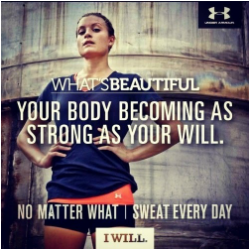 The Five Pillars Every doctor has his or her own conception of what constitutes good health. As I have discussed, my concept is a dynamic one in which we become more healthy as our body systems function at a higher level. The Anti-Inflammation Lifestyle (AIL) promotes health by improving function at the cellular level. Lowering inflammation enables the cells of our bodies to work more efficiently and improves circulation which improves the ability of cells to obtain adequate nutrition and effectively clear toxins and waste. A healthy diet and proper supplementation together form two of the five pillars which comprise the AIL, the other three being: exercise, stress management, and restorative sleep. Like the legs of a stool, each of the five pillars plays a role in supporting the AIL, upon which optimal function and health ultimately rest. “How important is it really to exercise? I eat well, I take supplements, I am not overweight, and my stress levels are low. My wife and I even walk on weekends. So aren’t I healthy? Do I really need to do exercise every day?” I am asked some version of this question on almost a daily basis in my practice. Some people just hate to exercise. Others are averse to swallowing pills, making it difficult for them to take important supplements. Still others have difficulty breaking unhealthy food cravings. In the end the question seems always to be, “Can’t good health be achieved by using four of the five pillars? Or three?” Just as the concept of health itself is a relative one (higher or lower levels of function correspond to better or worse health across a wide Continuum), so should each of the pillars be considered fluid. It is not so much a question of whether one’s diet is good or bad, whether one exercises or not, whether one takes all the right supplements or none of them, etc. Rather it is a question of making effort to move in the right direction along the Continuum of health, and to do so we must try to move at least to some degree in the right direction along the continuum of each of the five pillars. The Anti-Inflammation Lifestyle means eating progressively better over time, taking the right supplements, doing one’s best to create a routine of regular exercise, not allowing stressful life situations to go unaddressed for too long, and creating healthy sleep/ wake cycles with adequate rest. Can a person be healthy and not eat healthily? Can a person be healthy without exercising? Without sufficient rest? Without managing their stress levels? Without taking supplements? Well, four good legs on a stool are a lot better than three, but they are less strong and stable than five. Of the Five Pillars of good health, cardiovascular exercise stands in the center, bearing more of the burden of support than any of the others. |
AuthorArchives
August 2021
Categories
All
|

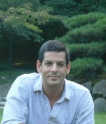
 RSS Feed
RSS Feed